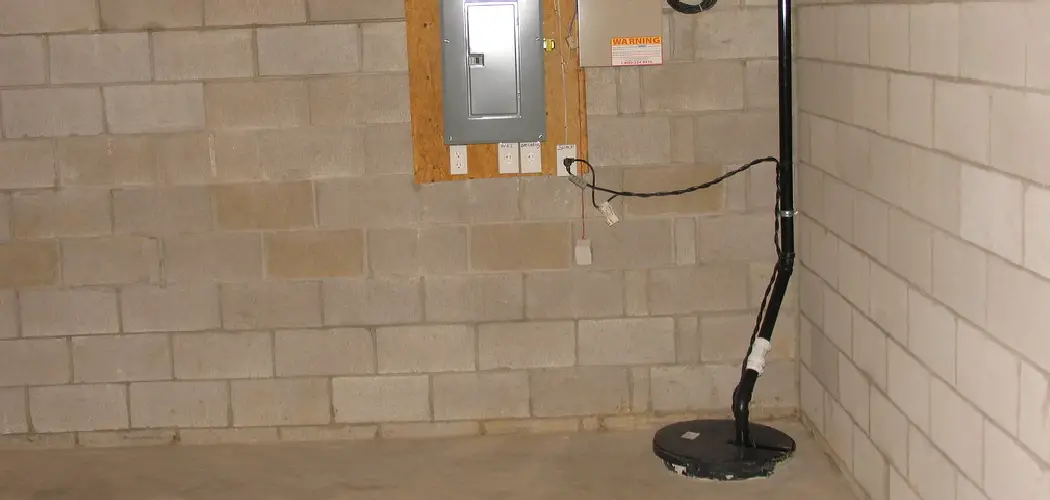Hiding a sump pump may seem daunting, but it is a vital step in maintaining the aesthetic appeal of your home’s interior while ensuring the system remains functional.
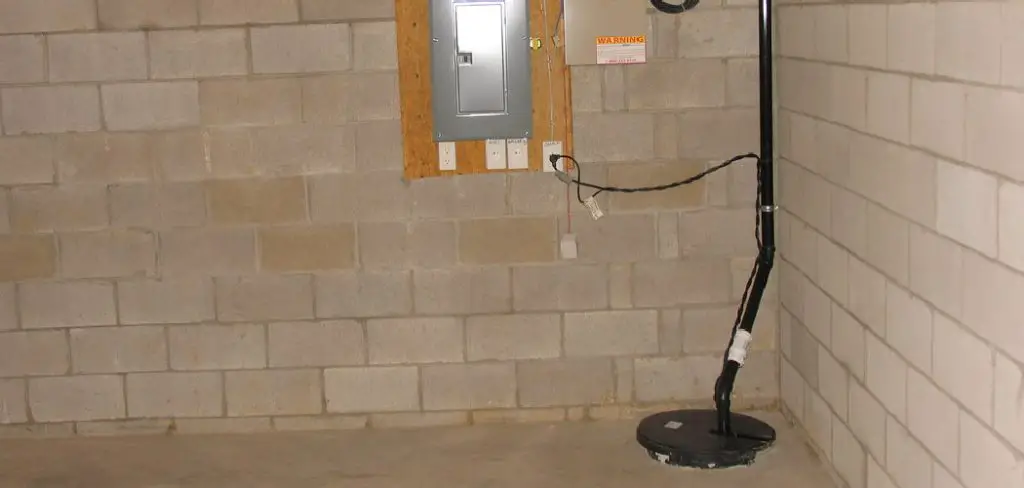
Sump pumps are essential for preventing flooding and managing moisture levels in basements, but their visible presence can detract from your living space’s overall design.
This guide will explore various methods and creative solutions for how to hide sump pump into your home environment, allowing you to enjoy peace of mind while preserving your decor.
What is a Sump Pump?
A sump pump is a critical component installed in the lowest part of a basement or crawl space. Its primary function is to remove accumulated water and prevent flooding by directing excess water away from your home. Typically situated in a pit, the pump activates when water rises to a certain level, ensuring that moisture does not compromise the structural integrity of your property.
Sump pumps can vary in horsepower and design, with some being submersible and others being pedestal-style. Regular maintenance of a sump pump is essential to ensure its efficiency, helping homeowners safeguard their living spaces against water damage.
Types of Sump Pumps
There are several types of sump pumps, each designed to meet different needs and preferences of homeowners. The two most common styles are submersible and pedestal pumps.
Submersible Pumps
Submersible sump pumps are designed to operate underwater within the sump pit. They are typically more powerful and efficient, making them ideal for larger homes or areas prone to heavy flooding. These pumps are usually quieter during operation and take up less space since they fit entirely within the sump pit.
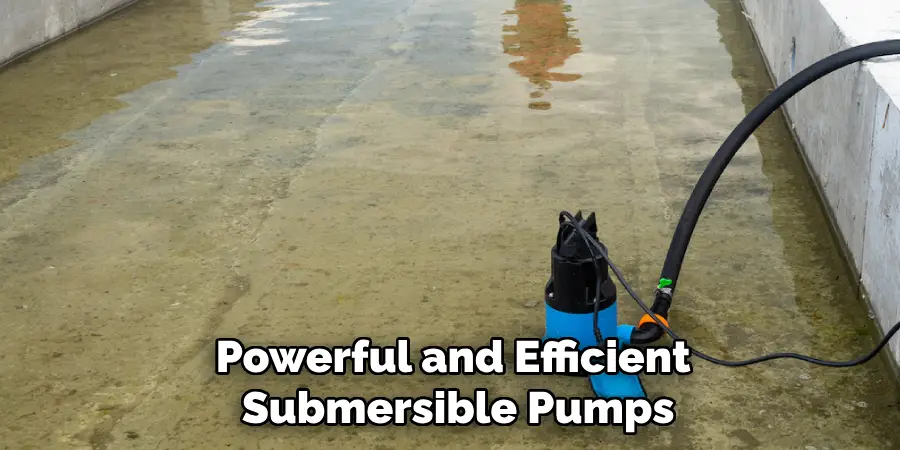
Pedestal Pumps
Pedestal sump pumps, on the other hand, feature a motor that sits above the sump pit, with a long shaft extending down into the water. While they tend to be more affordable than submersible pumps, they are generally less powerful and may require more regular maintenance. Pedestal pumps are easier to access for repairs and upgrades, as the motor is not submerged.
Backup Pumps
In addition to these main types, backup sump pumps are important for homeowners looking to enhance their flood protection. These pumps typically operate on battery power and kick in automatically when the primary pump fails or during power outages, ensuring continued protection against water accumulation.
Understanding the differences between these sump pump types can help homeowners make an informed choice based on their specific needs and the risk of flooding in their area.
10 Methods How to Hide Sump Pump
1. Build a Decorative Enclosure
One of the most effective ways to hide a sump pump is by constructing a decorative enclosure around it. You can build a custom cabinet or box using materials that match or complement your existing decor. For a stylish finish, use wood, metal, or composite materials to create a frame that covers the pump while allowing for proper ventilation and access.
Incorporate features such as shelves, doors, or even a faux furniture piece to blend the enclosure seamlessly into the room’s aesthetic. Ensure that the enclosure has adequate ventilation to prevent overheating and allows easy access for maintenance.
2. Use a Plant or Garden Screen
In outdoor or garden settings, a plant or garden screen can effectively disguise a sump pump. Choose a large, decorative planter or trellis and strategically place climbing plants or shrubs around the sump pump area.
This natural approach not only hides the pump but also adds greenery and beauty to your yard. Opt for fast-growing or evergreen plants to ensure year-round coverage. Additionally, you can use garden screens made from bamboo or lattice as an alternative to plants, providing a more permanent and structured solution.
3. Install a Faux Cabinet
For a more refined look, consider installing a faux cabinet over the sump pump. This approach involves placing a cabinet or storage unit over the pump, which can double as additional storage space. Choose a cabinet design that matches your home’s style, whether it’s a traditional, contemporary, or rustic look.
Ensure that the cabinet is designed with removable panels or hinged doors to allow for easy access to the sump pump. This method effectively conceals the pump while providing functional storage and maintaining a cohesive room design.
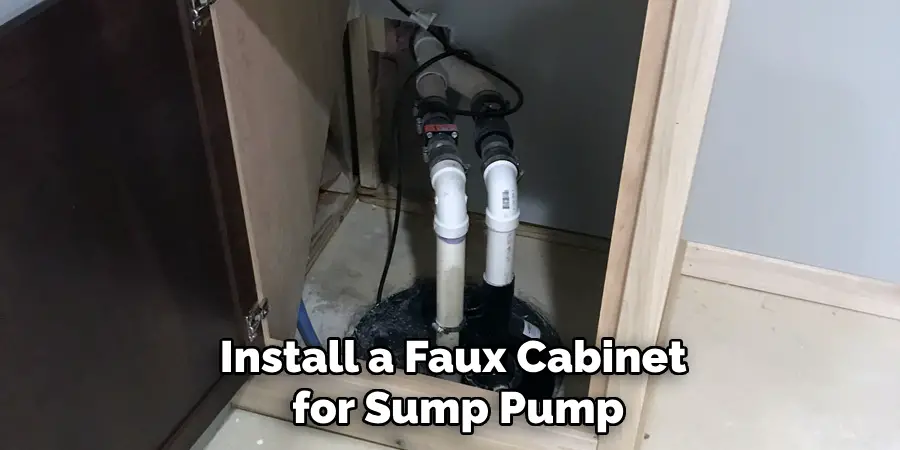
4. Create a Custom Built-in Bench
Transform the area around your sump pump by building a custom built-in bench. This method not only hides the pump but also adds a useful seating area to the space. Construct the bench with storage underneath or include lift-up seats to access the sump pump when necessary.
Choose durable materials that can withstand moisture and humidity, such as treated wood or water-resistant composites. This design adds functionality and a stylish element to the room while keeping the sump pump discreetly hidden.
5. Incorporate Decorative Screens
Decorative screens are another effective way to hide a sump pump while adding a touch of elegance to the space. Choose screens made from materials such as wood, metal, or fabric, and place them strategically around the sump pump.
Opt for designs that match your decor and provide a visually appealing barrier. For added versatility, use freestanding screens or room dividers that can be easily moved or adjusted. Ensure that the screens have enough space between the panels for ventilation and maintenance access.
6. Use a Fabric or Curtain Cover
A fabric or curtain cover is a simple and cost-effective solution for hiding a sump pump. Install a tension rod or curtain rail above the sump pump area and hang a decorative fabric or curtain to drape over the pump. Choose a fabric that complements your room’s decor, such as patterned, textured, or solid colors.
This method allows for easy access to the sump pump by simply pulling back the curtain or fabric when needed. For a polished look, consider using a fabric with a subtle sheen or adding trim to the edges.
7. Install a Custom-Built Closet
If the sump pump is located in a utility or basement area, installing a custom-built closet around it can provide a neat and organized appearance. Design the closet with shelves or cabinetry to maximize storage space and include a door or sliding panels for easy access to the pump.
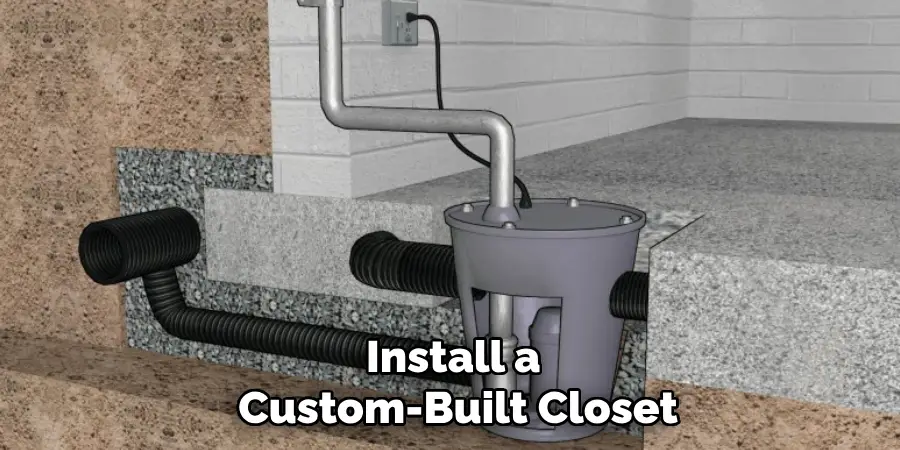
Choose materials and finishes that match the existing decor of the space, and ensure that the closet is well-ventilated to prevent overheating. This method not only hides the sump pump but also adds functional storage to the area.
8. Use a Decorative Box or Trunk
A decorative box or trunk can serve as both a functional and stylish solution for hiding a sump pump. Select a box or trunk with a design that complements your home’s decor, such as vintage, rustic, or modern styles. Place the box or trunk over or around the sump pump, ensuring it is large enough to cover the pump completely. Make sure the box or trunk has a removable lid or access panel for maintenance purposes. This method adds character to the room while concealing the sump pump effectively.
9. Incorporate Built-In Shelving
Built-in shelving units can be designed to conceal a sump pump while providing additional storage space. Construct shelving units with adjustable shelves or cabinets to accommodate the sump pump and other items. Ensure that the shelving unit is designed with access panels or removable sections to allow for maintenance and repairs. Choose a design that blends with the room’s decor, and incorporate decorative elements such as baskets, books, or art to enhance the overall look.
10. Use a Modular Storage Solution
Modular storage solutions offer flexibility and customization when hiding a sump pump. Choose modular storage units or systems that can be configured to fit around the sump pump area.
These units can include shelves, cabinets, or cubbies that are designed to hide the pump while providing additional storage. Modular systems can be easily adjusted or reconfigured as needed, making them a versatile option for concealing the sump pump. Select materials and finishes that coordinate with your existing decor for a cohesive look.
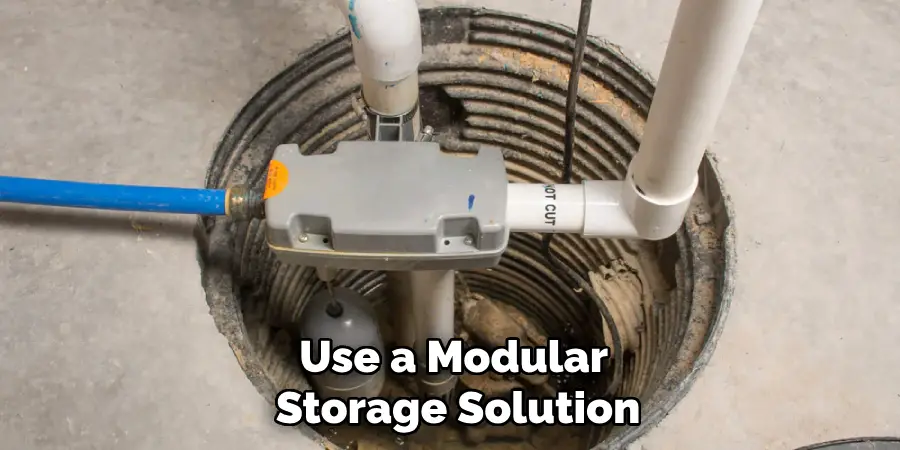
Common Mistakes to Avoid
When hiding a sump pump, there are several common mistakes to be mindful of to ensure both functionality and aesthetics. Firstly, avoid obstructing airflow; coverings should allow for proper ventilation to prevent overheating and maintain the pump’s efficiency.
Secondly, neglecting access can lead to frustration; ensure that your chosen concealment method allows for easy maintenance, as regular checks are essential for the sump pump’s operation. Additionally, using materials that are susceptible to moisture damage can result in issues down the line, so select water-resistant materials where appropriate.
Conclusion
Hiding a sump pump can enhance the aesthetics of your home while maintaining its essential functionality. Whether you opt for a decorative enclosure, built-in furniture, or natural elements like plants, there are numerous methods to conceal a sump pump effectively. Each method offers a unique approach, from custom-built cabinets and benches to decorative screens and fabric covers. Thanks for reading, and we hope this has given you some inspiration on how to hide sump pump!

